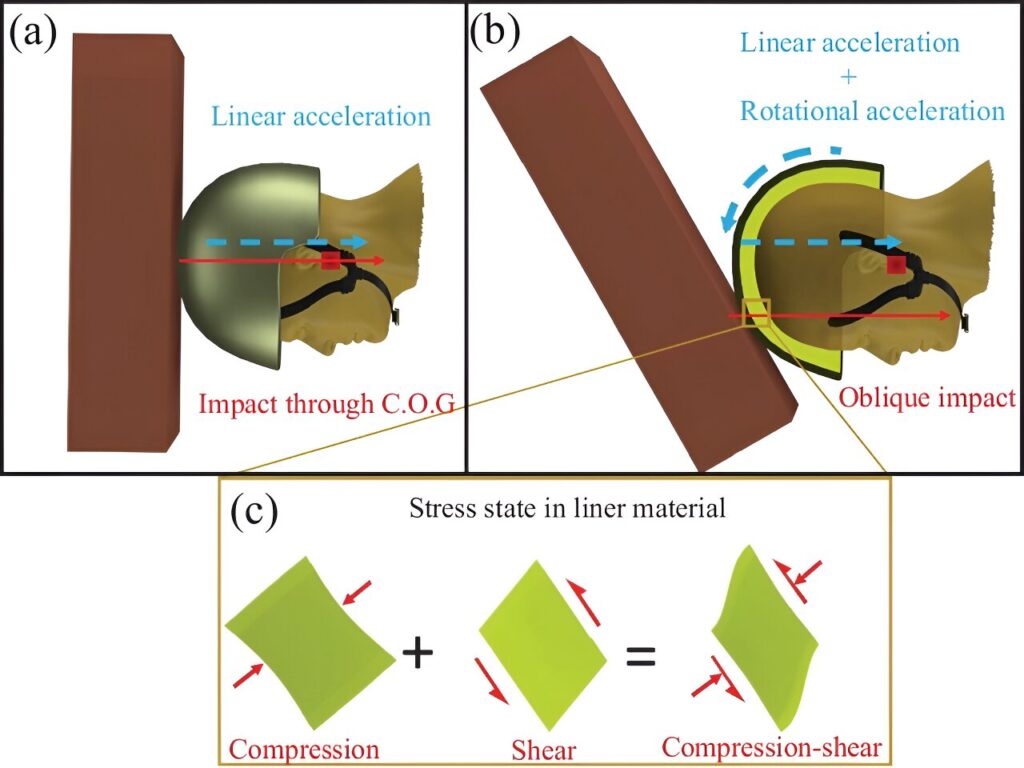From falls to football tackles, most blows to the head occur at odd angles. And those impacts trigger simultaneous linear and rotational head motions. The rotating movement in particular causes shear strain, which is especially damaging to the brain.
A new lightweight foam material could take most or all of that strain off the brain.
Developed by University of Wisconsin–Madison engineers, the new material—a vertically aligned carbon nanotube foam—can dissipate an enormous amount of rotational kinetic energy from an impact. And as a helmet lining material, it could mitigate, or even prevent, traumatic brain injuries by weakening rotational kinetic energy before it reaches the brain.
In fact, the new material is 30 times better at absorbing shear strain than the foam currently used in U.S. military combat helmet liners. The team described the material and its unique properties in a paper published Dec. 7, 2023, in the journal Experimental Mechanics.
“This material shows great promise for enabling new helmets that are drastically better at preventing concussions,” says Ramathasan Thevamaran, a UW–Madison assistant professor of mechanical engineering who led the research.

Why it works
Currently, some helmets attempt to reduce rotational motion from impacts by employing a layer that allows a sliding motion to occur between the wearer’s head and the helmet’s outer shell. However, Thevamaran says these moving layers don’t dissipate energy from shear strain; even worse, they tend to jam when they’re severely compressed—in other words, following a blow.
Since it doesn’t rely on sliding layers, the new material sidesteps these shortcomings.
Even better, when it’s compressed, the material gets unusually better at accommodating shear and dissipating energy from an impact, Thevamaran says.
This advance builds on his previous research on vertically aligned carbon nanotube foams, in which his team demonstrated the material’s extraordinary shock-absorbing abilities. The material consists of carbon nanotubes—carbon cylinders just one atom thick in each layer—that are carefully arranged into closely packed cylinder structures. The material’s novel architecture, which has unique structural features across multiple length scales, gives the material its exceptional properties.
In addition, the researchers recently demonstrated that their vertically aligned carbon nanotube foams exhibited outstanding thermal conductivity and diffusivity, which would enable a helmet liner made of the material to keep the wearer’s head cool in hot environments.
Coupled with its thinness, that cooling capability puts the new material on par with graphite foams and makes it attractive for applications where less weight is important. Beyond helmet liners, the material could also be used in electronic packaging and electronic systems to both protect against shocks and keep electronics cool.


